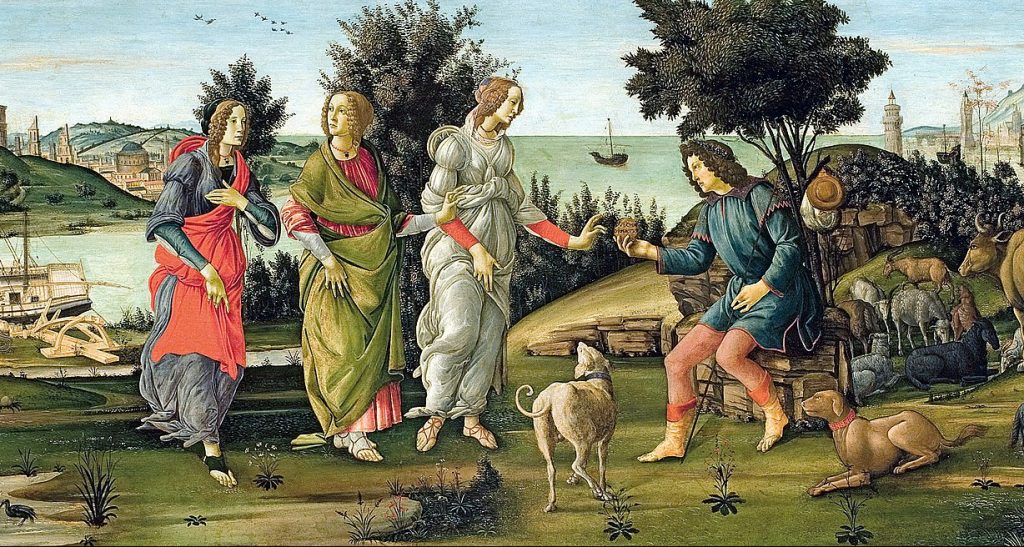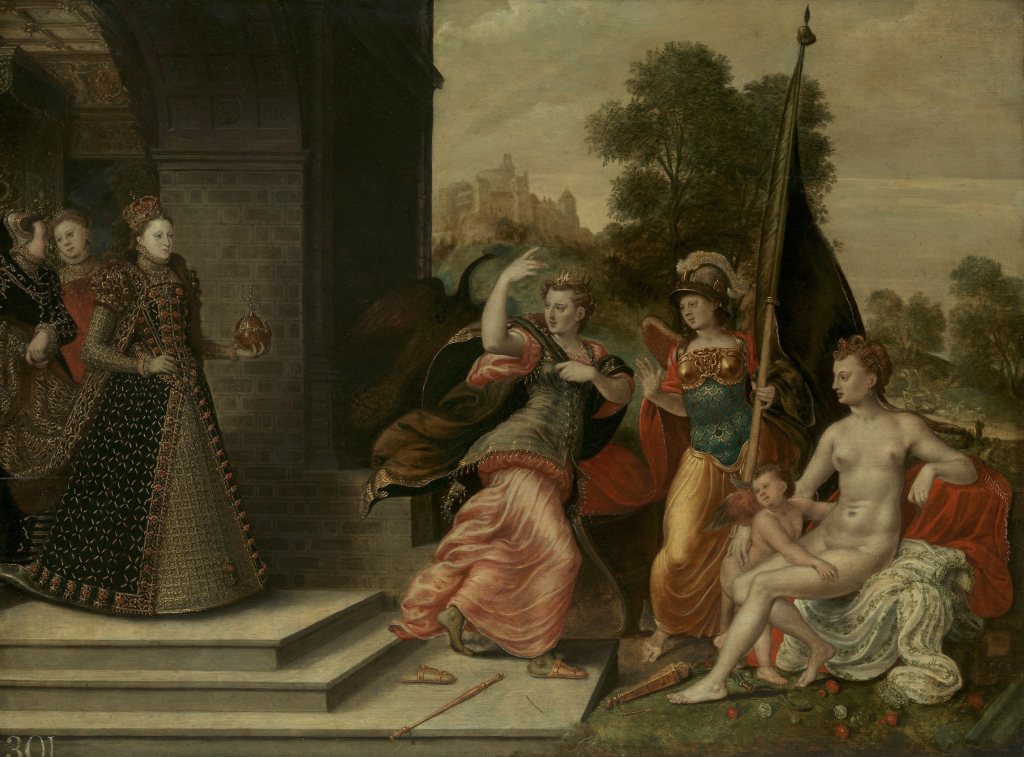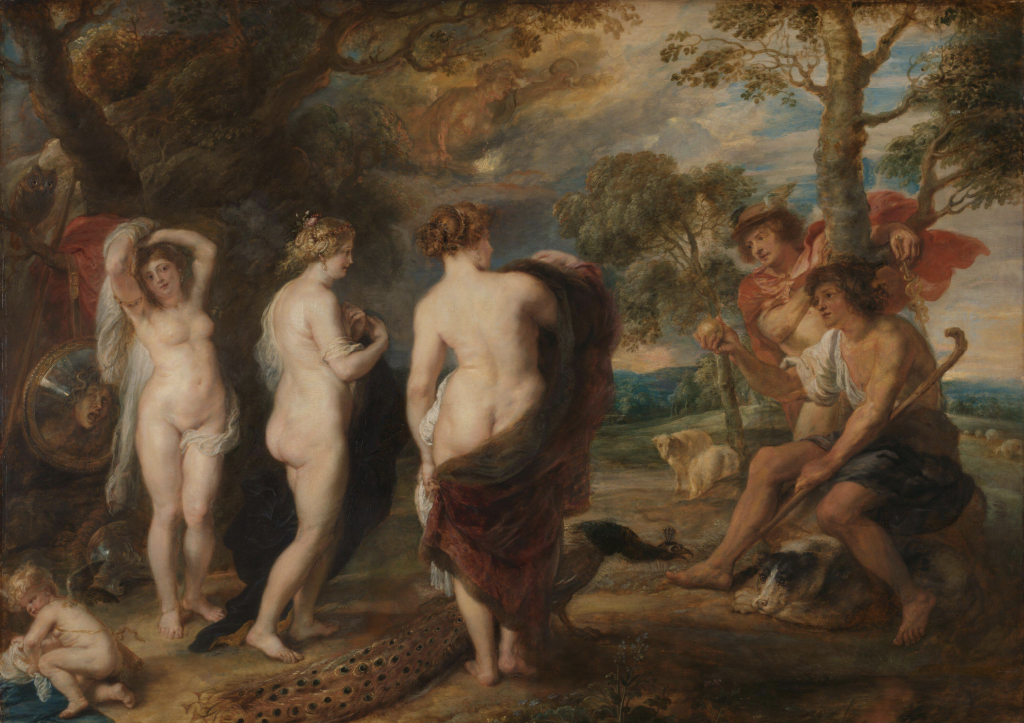The (Real) History of Thanksgiving
Thanksgiving brings families together to share rich meals featuring turkey, stuffing, and seasonal décor like pumpkins and warm autumn colors.
Errika Gerakiti 28 November 2024
According to Greek mythology, the Judgement of Paris is a story which leads up to the start of the Trojan War. As the myth goes, three goddesses are judged for their beauty. The Greek and Roman versions of these are Hera/Juno (goddess of marriage), Athena/Minerva (goddess of wisdom and warfare), and Aphrodite/Venus (goddess of love, beauty, and sexuality). Most versions of this myth are told in the Roman equivalent through art. However, the story remains the same. Here are three versions of the Judgement of Paris as told through art during different periods.
As told by historians, Zeus (god of Sky and Thunder) held a wedding for Peleus and Thetis (parents of Achilles). While every god and goddess was invited, Eris, the goddess of discord, was not due to the fear that she might create trouble (and for a good reason). Out of spite and anger, Eris crashed the wedding holding a golden apple which she threw into the feast of gods as a prize of beauty (an apple of discord refers to the crux of an argument). Inscribed on the apple, it read: “To the fairest one.”
Hera, Athena, and Aphrodite all claimed the apple. At first, the goddesses asked Zeus to judge them on who was the fairest. Zeus refused and settled on the Trojan mortal, Paris, to be the judge. As a result, the goddesses tried to bribe Paris, not with their beauty but with gifts.
Unsurprisingly they offered Paris gifts by using their respective powers. Hera told Paris he could become king of Europe and Asia through marriage. Athena offered him the wisdom and skills to become a great warrior. Finally, Aphrodite offered him the only prize he desired, Helen of Sparta, the most beautiful woman in the world. However, Helen was already the wife of the Greek king Menelaus. After Aphrodite won, Helen was handed over to Paris, thus igniting the Trojan War with the Greeks’ mission to retrieve her. So how was this story translated into art?

Sandro Botticelli, Judgement of Paris, 1488, Giorgio Cini Foundation, Venice, Italy. Wikimedia Commons (public domain). Detail.
First is this simplified version of the Judgement of Paris story painted by Sandro Botticelli. On the right, Paris, the mortal shepherd, is seated, handing Aphrodite her prize of the golden apple. Standing in the center, draped in elegant white clothing, is Aphrodite. Behind her are Hera, wearing green, and Athena, dressed in red and blue. While the three goddesses and Paris are the only people in the scene, the background shows a seaside landscape.
This depiction is oddly different from other paintings for multiple reasons. The first is the seaside landscape since the original myth never mentions a seaside, only the Greek Mount Ida. Next is the fact that the three goddesses appear to be clothed. This painting is the only version that exists in which there is not at least one nude goddess. While it is the most modest depiction of the Judgement of Paris, it screams Botticelli’s elegant painting style. However, since this myth was widely known, many versions have been painted throughout history. For example, Queen Elizabeth I wanted a version of her own.

Hans Eworth, Elizabeth I and the Three Goddesses, 1569, Royal Collection Trust, London, UK.
Perhaps the most intriguing version of the Judgement of Paris is Hans Eworth’s Elizabeth I and the Three Goddesses. In this version of the Roman myth Queen Elizabeth I takes the place of Paris. She appears on the left-hand side of the composition holding a golden orb (instead of an apple). On the right are the three goddesses – the Roman equivalents of Hera, Athena, and Aphrodite – Juno, Minerva, and Venus. While the original winner in this story is Venus, here Elizabeth I holds the prize to symbolize herself as more beautiful than the three acclaimed goddesses.
Of course, the symbolism of this painting is noteworthy, but the artist’s contribution shouldn’t be dismissed. Eworth cleverly divided the image between the real world and the allegorical world. Elizabeth I stands in an interior ornately decorated with Tudor iconography and textiles. Eworth gives viewers another sense of reality by depicting what is presumed to be Windsor Castle in the background. Meanwhile on the right side of the composition, behind the goddesses, a chariot is drawn by swans. While this version was specifically made for Elizabeth I, the artist dresses each goddess according to their significant power.

Peter Paul Rubens, The Judgement of Paris, 1632-1635, The National Gallery, London, UK.
Finally, Peter Paul Rubens’ version of the Judgement of Paris occurs in a rural countryside at sunset. Ruben’s painting is based on the Roman poet Lucian’s version of the myth in which Paris could not choose a goddess while they were clothed and instead had them remove their clothing. On the far left, Minerva faces the viewer and pulls her robe over her head. Next to her stands Juno, facing sideways while she lifts her cloak. Finally, the victorious Venus stands before Paris with her back to the viewers as he hands her the golden apple.
A few other characters appear in this scene that are not included in the previous paintings mentioned. For example, standing behind Paris is Mercury, the messenger god. Medusa is seen in the mirror behind Minerva, symbolizing the imminent war that follows this scene. Also, Alecto, the “implacable fury,” is shown in the sky as Juno commands her to start the Trojan War by making Paris kidnap Helen.
This version of the story is the most well-known since many artists painted the three goddesses nude. Furthermore, Rubens does an incredible job of showcasing the beauty of the female form in three different positions in a delicate manner.
DailyArt Magazine needs your support. Every contribution, however big or small, is very valuable for our future. Thanks to it, we will be able to sustain and grow the Magazine. Thank you for your help!